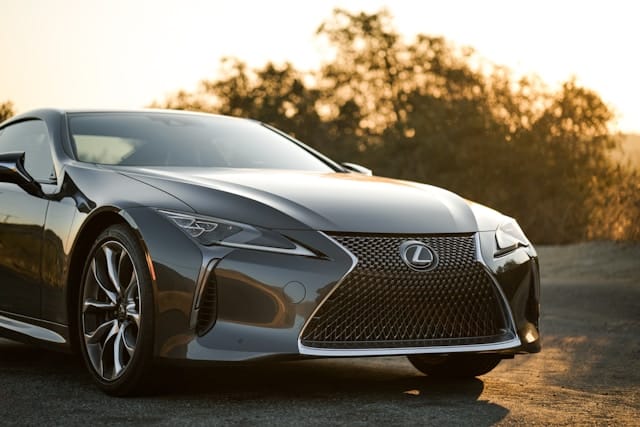What’s the Best Method to Install a Hydro Handbrake in a Drift-Car Nissan 240SX?

Installing a hydro handbrake in a drift car like a Nissan 240SX can be a game-changer in your drift racing experience. A hydraulic handbrake, also known as a hydro or ebrake, can provide more control and precision to your drift movements, making each turn smoother and more impressive. The process may seem daunting at first glance, but with the right steps, tools, and a little patience, it’s a task most car enthusiasts can undertake in their own garage.
Why Use a Hydro Handbrake?
Before we delve into the steps of the installation process, let’s understand why a hydro handbrake can be a great asset in your drift-car setup. For drift racing, you will need to use your handbrake more than average drivers do. Unlike the stock handbrake in most cars, a hydro handbrake uses hydraulic pressure to lock up the rear brakes, providing a more instant and powerful brake reaction.
A lire aussi : How do I move to Portugal on a D7 visa ?
The hydraulic system is reliable, offering consistent braking pressure every time you pull the lever. Unlike cable-based systems that can stretch and wear out over time, a hydraulic ebrake will maintain its performance even under intense use. With a hydro handbrake, you’ll gain an extra level of control that will make your drifting smoother, more precise, and more spectacular.
Choosing the Right Hydro Handbrake
Before you start the installation, you need to choose the right hydro handbrake for your Nissan 240SX. The market offers a variety of options, each with its own advantages and distinctive features.
Lire également : Can You Reduce Drag on a Ford Mustang with an Underbody Diffuser for Higher Top Speed?
When choosing an ebrake, consider its size and ergonomics. It should fit comfortably in your hand and not obstruct your regular driving operations. You should also look at the type of master cylinder the handbrake uses. The master cylinder is a critical component of the hydraulic system. It converts the mechanical force from your hand into hydraulic pressure that operates the brakes.
A dual outlet master cylinder is a popular choice. This setup uses two separate lines for each rear caliper, providing a balanced and efficient braking force. The rating of the master cylinder is also important. A higher rating will deliver more braking power, but it may also require more force to operate.
Installing the Hydro Handbrake
With the right hydro handbrake in hand, the next step is the installation. You’ll need a few tools, including a brake line flaring tool, brake line wrenches, and potentially a drill if you need to make new mounting points for the handbrake.
Start with the master cylinder. You’ll need to install it on the hydro handbrake, if it isn’t pre-installed. Then, determine the mounting location for the handbrake. It should be within easy reach while you’re in the driving position, but not in the way of your regular driving operations.
Once you have decided on the location, mount your hydro handbrake. Depending on the design of your handbrake, you might need to drill holes and use bolts to secure it in place.
Connecting the Hydraulic Lines
After your hydro handbrake is securely mounted, the next step is to connect the hydraulic lines. These lines will run from the master cylinder on your handbrake to your rear calipers.
To do this, you will need to disconnect the existing brake lines from your rear calipers. Then, connect the new lines from your handbrake to the calipers. You’ll also need to connect the original brake lines to the master cylinder on your handbrake. This will allow your hydraulic handbrake to operate independently of your car’s stock brake system.
Ensure all your connections are tight and leak-free. Brake fluid is highly corrosive, so any leaks can cause damage to your car.
Adjusting and Testing Your Hydro Handbrake
Once everything is connected, it’s time to adjust and test your new hydraulic handbrake. Start by bleeding the system to remove any air bubbles that could affect braking performance. This process involves pumping the handbrake, opening the bleed valve on the calipers to release any air, and then closing the valve before releasing the handbrake.
After bleeding the system, test your hydro handbrake. Start with slow speeds to ensure everything is working properly. Gradually increase your speed as you confirm the performance of your new ebrake.
Remember, while installing a hydro handbrake can greatly enhance your drifting performance, it’s essential to maintain regular maintenance. Check your hydraulic lines regularly for any leaks, and re-bleed your system as needed to ensure consistent performance.
There you have it—a comprehensive guide to installing a hydro handbrake in your drift-car Nissan 240SX. Though it might seem challenging, with a little patience and attention to detail, you can achieve a professional-level installation and take your drift racing to the next level. Happy drifting!
Dual Caliper Setup vs Inline Setup for Hydro Ebrake
One of the major decisions you need to make when installing a hydro ebrake is whether to go for a dual caliper setup or an inline setup. Let’s break down both options to help you make an informed choice.
In a dual caliper setup, an additional set of brake calipers is installed on the rear wheels. This means your car will have two separate braking systems: one for the foot brake and another for the hand brake. When you pull the handbrake, only the secondary calipers activate, leaving the foot brake system untouched. This setup is highly recommended for drift cars as it provides a more independent and powerful control while drifting.
An inline setup, on the other hand, shares one set of calipers between the foot and hand brake systems. When you pull the handbrake, it interrupts the hydraulic flow from the foot brake to the rear brakes. This setup is simpler and less expensive than the dual caliper setup. However, it gives less braking power and can interfere with the foot brake system, which is not ideal for drift racing.
Therefore, for your Nissan 240SX, a dual caliper setup is the more suitable option of the two. Remember, the type of setup you choose will influence your ebrake setup and affect the overall performance of your drift car.
Conclusion: Maximize Your Drift Experience with a Hydro Handbrake
In conclusion, the hydraulic handbrake is a critical upgrade for any serious drift racer. It gives you superior control over your drifts, enabling you to make sharper turns and more impressive maneuvers. Whether you’re a professional racer or a weekend warrior, installing a hydro ebrake in your Nissan 240SX can take your drifting experience to the next level.
Remember, the key to a successful installation lies in choosing the right handbrake, opting for a dual caliper setup over an inline one, and meticulously following the installation steps. Thereafter, regular maintenance is crucial. Keep an eye on your hydraulic lines for any potential leaks, and regularly bleed your system to ensure top-notch performance.
With the right hydro handbrake installed correctly, not only will your drifts be more spectacular, but you’ll also enjoy the thrill of having superior control over your car. So, gear up and get ready to take the plunge into the exciting world of drift racing with your newly installed hydro handbrake. Happy drifting!
